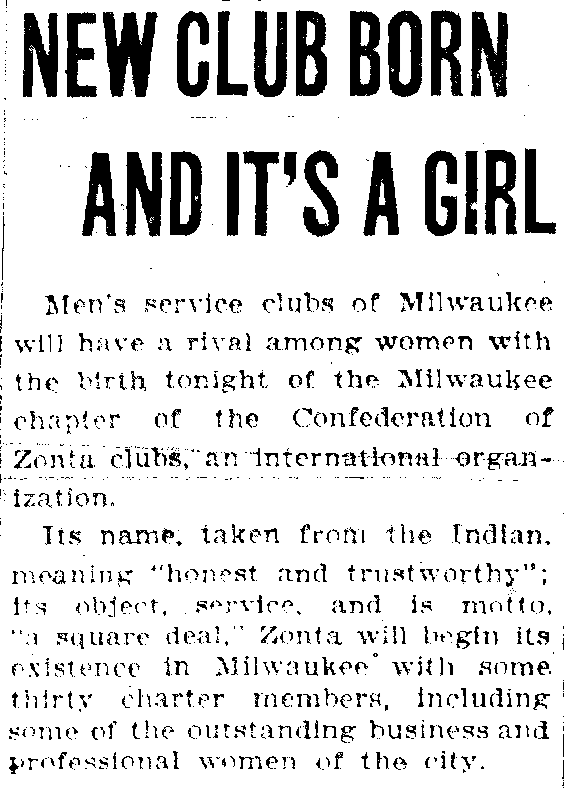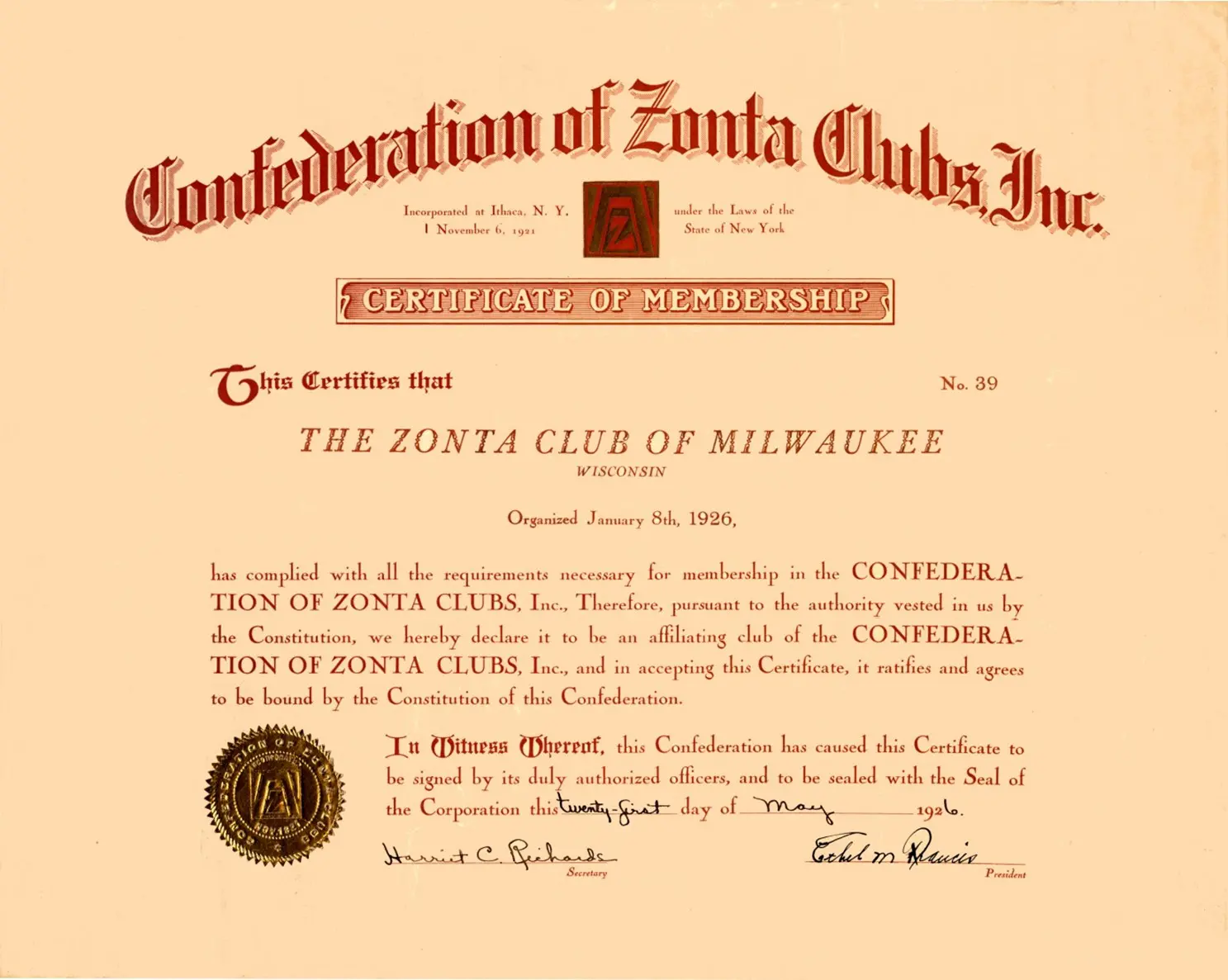The 1920s
The Chartering of the Zonta Club of Milwaukee
On January 13, 1924, The Milwaukee Journal featured a comprehensive article about the mission, vision, values, history, and prominent Zontians of the Zonta Confederation. Harriet B. Ackroyd of Utica, NY, President of Zonta said “Zontians believe that the world is in need of women who know how to play the game of life fairly; that honor among women is as desirable and as attainable a quality as among men; that the spirit of cooperation and friendliness and camaraderie leads to saner social and moral standards; that the professional women of America can play a more intelligent and more active part in the social, educational, and spiritual order of the day by unifying their influence.”
This was the context in which the Zonta Club of Milwaukee was organized, the 39th to be chartered – on January 08, 1926 – with 30 charter members in retail, finance, medicine, music, real estate, law, insurance, and education. Dr. Bessie Childs, an Osteopath, was the first Club President.

Dr. Bessie C. Childs

Milwaukee Sentinel January 8, 1926

Milwaukee Sentinel, January 09, 1926
One of the pioneer Charter Members and a Club President was Dorothy Caroline Enderis. The UWM Business Office has written that “Her dedication is still evident in the innovative and award-winning programs of the Milwaukee Public Schools, Division on Community Recreation. Her vision and passion for a city responsive to the needs of its citizens, resulted in social programs that were well ahead of many other cities.”

Dorothy Caroline Enderis – Photo from UWM Business School

Other charter members were: Edith M. Shaw, Adeline T. Ricker, Marie K. Franzen, Fannie V. Gassman, Delia G. Ovitz, Katherine R. Williams, Daisy L. Carrington, Ruth Foster, Anna E. Koerner, Lillian Baker, Mary S. Berry, Mrs. G.L. Andrews, Bessie O’Leary, Adele Abert, Rose Gemler, Harriet Semler, Edith McCann, Grace A. Kelly, Louise M. Rubs, Anna Leisk, Bertha Ehlers, Maud Swett, Anna B. Swinney, Beatrice Robart, and Gertrude M. Jacobs.
By February, there were 45 members. Early goals included assessing the needs of women working in industrial environments, mentoring and training twelve girls to develop their skills as effective employees in the industrial workforce. Analyzing questionnaires that surveyed the various fields of industry open to women, the Club could assist young girls in making wise employment choices. Utilizing the surveys developed by the Zonta Club of Detroit, the questions covered working conditions, job duties, wages and overtime, as well as promotions.
Other early concerns were establishing good relationships between employer and employee, children’s education, and that worker protection should be applied to men and women equally,
The Club had its own drum corps that performed for sick children and the elderly in hospitals during the 1928 Zonta Convention in St. Paul, MN.
In 1927, Toronto, Canada was admitted to the Confederation of Zonta Clubs and by 1930, the Confederation was incorporated as Zonta International
